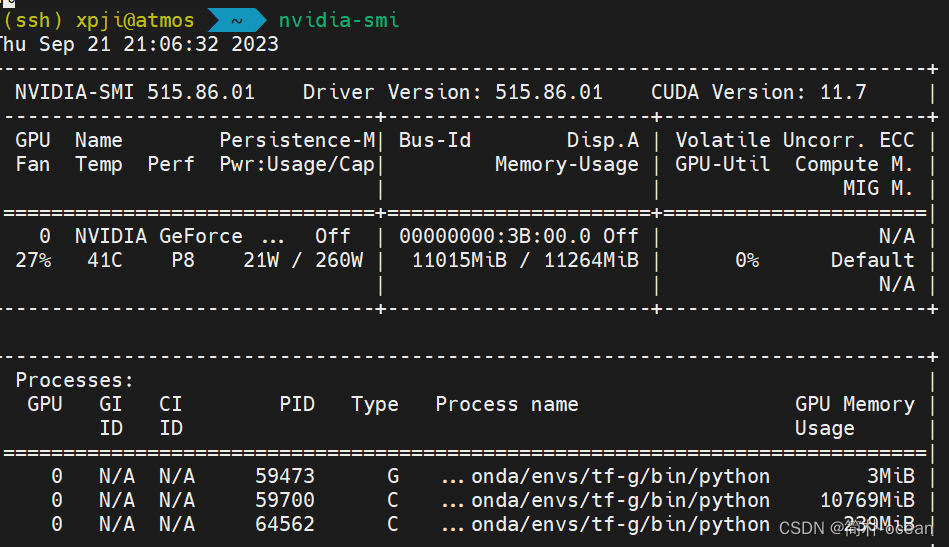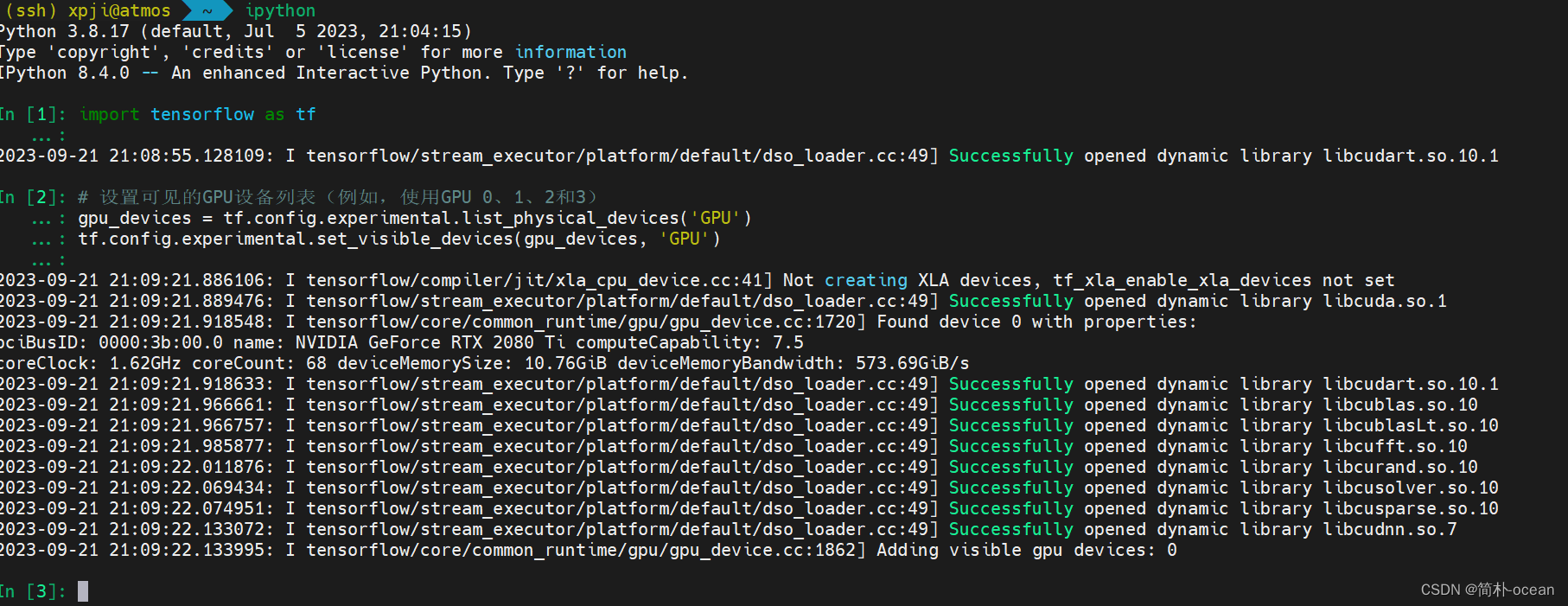-
Linux -- 使用多张gpu卡进行深度学习任务(以tensorflow为例)
在linux系统上进行多gpu卡的深度学习任务
- 确保已安装最新的 TensorFlow GPU 版本。
import tensorflow as tf print("Num GPUs Available: ", len(tf.config.list_physical_devices('GPU')))- 1
- 2
- 1、确保你已经正确安装了tensorflow和相关的GPU驱动,这里可以通过在命令行输入
nvidia-smi来查看:

如果成功显示了类似上述的GPU信息和驱动版本信息,则说明NVIDIA驱动已经正确安装。
2、导入必要的库,设置可见的gpu设备列表:
import tensorflow as tf # 设置可见的GPU设备列表(例如,使用GPU 0、1、2和3) gpu_devices = tf.config.experimental.list_physical_devices('GPU') tf.config.experimental.set_visible_devices(gpu_devices, 'GPU')- 1
- 2
- 3
- 4
- 5

- 3、创建一个
MirroredStrategy对象,该对象将自动复制模型和数据到每个可见的GPU卡上:
strategy = tf.distribute.MirroredStrategy()- 1
- 4、在
strategy范围内创建和训练模型:
with strategy.scope(): # 创建和编译模型 model = create_model() model.compile(...) # 加载数据 train_dataset = load_train_data() test_dataset = load_test_data() # 训练模型 model.fit(train_dataset, validation_data=test_dataset, ...)- 1
- 2
- 3
- 4
- 5
- 6
- 7
- 8
- 9
- 10
- 11
以上,在MirroredStrategy范围内创建的模型将自动复制并分布到每个可见的GPU卡上,每个卡都将处理一部分数据。
使用多个 GPU 的最佳做法是使用
tf.distribute.Strategy以下给出一个官网的简单示例:
tf.debugging.set_log_device_placement(True) gpus = tf.config.list_logical_devices('GPU') strategy = tf.distribute.MirroredStrategy(gpus) with strategy.scope(): inputs = tf.keras.layers.Input(shape=(1,)) predictions = tf.keras.layers.Dense(1)(inputs) model = tf.keras.models.Model(inputs=inputs, outputs=predictions) model.compile(loss='mse', optimizer=tf.keras.optimizers.SGD(learning_rate=0.2))- 1
- 2
- 3
- 4
- 5
- 6
- 7
- 8
- 9
当然,也有手动的放置方法:
tf.debugging.set_log_device_placement(True) gpus = tf.config.list_logical_devices('GPU') if gpus: # Replicate your computation on multiple GPUs c = [] for gpu in gpus: with tf.device(gpu.name): a = tf.constant([[1.0, 2.0, 3.0], [4.0, 5.0, 6.0]]) b = tf.constant([[1.0, 2.0], [3.0, 4.0], [5.0, 6.0]]) c.append(tf.matmul(a, b)) with tf.device('/CPU:0'): matmul_sum = tf.add_n(c) print(matmul_sum)- 1
- 2
- 3
- 4
- 5
- 6
- 7
- 8
- 9
- 10
- 11
- 12
- 13
- 14
- 15
- 16
在tensorflow上使用gpu:https://www.tensorflow.org/guide/gpu?hl=zh-cn
-
相关阅读:
MySQL事务
高软核心问题
web网页设计期末课程大作业:水果网站设计——HTML+CSS+JavaScript水果超市(带论文)
SpringCloud源码分析 (Eureka-Server-处理客户端删除状态请求) (六)
如何避免邮件被识别为垃圾邮件
简述分布式链路追踪工具——Jaeger
昨天阅读量创记录3万
【无标题】
‘‘‘python‘‘‘内置函数
Linux之内核Platform LED
- 原文地址:https://blog.csdn.net/weixin_44237337/article/details/133148694
